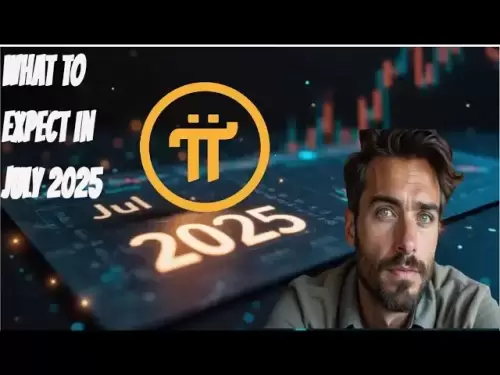-
 Bitcoin
Bitcoin $107,443.3008
-1.17% -
 Ethereum
Ethereum $2,494.2503
-0.63% -
 Tether USDt
Tether USDt $1.0003
0.00% -
 XRP
XRP $2.2496
2.23% -
 BNB
BNB $658.7569
0.63% -
 Solana
Solana $154.9826
1.94% -
 USDC
USDC $1.0000
0.01% -
 TRON
TRON $0.2799
1.07% -
 Dogecoin
Dogecoin $0.1659
-1.78% -
 Cardano
Cardano $0.5745
0.25% -
 Hyperliquid
Hyperliquid $39.7005
0.13% -
 Bitcoin Cash
Bitcoin Cash $519.5989
3.78% -
 Sui
Sui $2.7874
-2.40% -
 Chainlink
Chainlink $13.3762
-1.69% -
 UNUS SED LEO
UNUS SED LEO $9.0784
-0.64% -
 Avalanche
Avalanche $17.9846
-2.81% -
 Stellar
Stellar $0.2390
-0.06% -
 Toncoin
Toncoin $2.9028
0.25% -
 Shiba Inu
Shiba Inu $0.0...01147
-2.17% -
 Litecoin
Litecoin $86.6956
-1.27% -
 Hedera
Hedera $0.1508
-0.50% -
 Monero
Monero $322.6222
3.26% -
 Polkadot
Polkadot $3.4124
-2.99% -
 Dai
Dai $0.9999
0.00% -
 Bitget Token
Bitget Token $4.5434
-1.97% -
 Ethena USDe
Ethena USDe $1.0002
0.00% -
 Uniswap
Uniswap $7.1562
-2.61% -
 Aave
Aave $275.8830
-1.02% -
 Pepe
Pepe $0.0...09790
-4.04% -
 Pi
Pi $0.5018
-5.09%
What is the role of the risk reserve of Gate.io contract? What are the consequences of insufficient reserves?
The risk reserve on Gate.io ensures platform stability by covering losses from liquidations, protecting traders from defaults and market volatility.
May 05, 2025 at 12:21 am
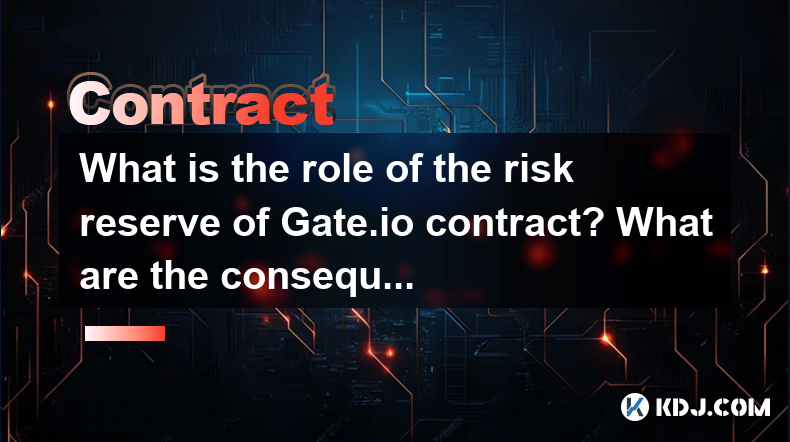
The risk reserve of Gate.io contract plays a crucial role in maintaining the stability and security of the trading platform. It acts as a buffer to absorb potential losses that may arise from market volatility or trader defaults. Understanding the role of the risk reserve and the consequences of insufficient reserves is essential for traders who engage in futures and perpetual contracts on Gate.io.
The Purpose of the Risk Reserve
The primary purpose of the risk reserve is to ensure the financial integrity of the trading platform. When traders engage in futures or perpetual contracts, they are essentially entering into agreements to buy or sell an asset at a future date. These contracts are leveraged, meaning traders can control large positions with a relatively small amount of capital. However, this leverage also increases the risk of significant losses.
The risk reserve is funded by a portion of the trading fees collected from users. This reserve is used to cover losses that occur when a trader's position is liquidated, and the liquidation price is not sufficient to cover the outstanding debt. By maintaining a robust risk reserve, Gate.io can mitigate the impact of these losses and ensure that the platform remains solvent.
How the Risk Reserve Works
When a trader's position is liquidated, the risk reserve steps in to cover any shortfall. For example, if a trader has a long position in a futures contract and the market moves against them, causing their position to be liquidated, the risk reserve will cover the difference between the liquidation price and the actual loss incurred. This mechanism helps to protect other traders from bearing the cost of the default.
The risk reserve is also used to manage the risk of auto-deleveraging (ADL). In situations where the market moves rapidly, and multiple positions are liquidated simultaneously, the risk reserve can help to absorb the losses and prevent a cascade of liquidations that could destabilize the platform.
Consequences of Insufficient Reserves
If the risk reserve is insufficient to cover the losses from liquidations, several negative consequences can arise. The most immediate impact is that traders may face increased risk of auto-deleveraging. When the risk reserve is depleted, the platform may need to resort to ADL to manage the losses, which can result in profitable positions being forcibly closed to cover the losses of other traders.
Another consequence of insufficient reserves is potential delays in withdrawals. If the platform's financial health is compromised due to a lack of reserves, Gate.io may need to temporarily suspend withdrawals to ensure that it can meet its obligations to all users. This can lead to frustration and loss of confidence among traders.
In extreme cases, insufficient reserves can lead to the insolvency of the platform. If the risk reserve is unable to cover the losses from liquidations, and the platform is unable to meet its financial obligations, it may be forced to declare bankruptcy. This would result in significant losses for all users of the platform, as their funds would be at risk.
Monitoring the Risk Reserve
To mitigate the risks associated with insufficient reserves, it is important for traders to monitor the health of the risk reserve. Gate.io provides transparency about the status of the risk reserve through its platform, allowing traders to see the current balance and any recent changes.
Traders can take the following steps to monitor the risk reserve:
- Visit the Gate.io website and navigate to the futures or perpetual contract section.
- Look for the risk reserve information, which is typically displayed on the trading interface or in the platform's documentation.
- Regularly check the risk reserve balance to ensure that it remains at a healthy level.
By staying informed about the status of the risk reserve, traders can make more informed decisions about their trading activities and manage their risk more effectively.
Best Practices for Managing Risk
In addition to monitoring the risk reserve, traders can adopt several best practices to manage their risk when trading futures and perpetual contracts on Gate.io. These include:
- Using appropriate leverage: Traders should use leverage cautiously and only take on positions that they can afford to lose. High leverage can amplify both gains and losses, increasing the risk of liquidation.
- Setting stop-loss orders: Stop-loss orders can help to limit losses by automatically closing a position when the market moves against it. Traders should set stop-loss orders at levels that they are comfortable with.
- Diversifying their portfolio: By spreading their capital across different assets and trading strategies, traders can reduce their exposure to any single market or position.
- Staying informed about market conditions: Traders should stay up-to-date with market news and events that could impact their positions. This can help them to anticipate and react to market movements more effectively.
By following these best practices, traders can reduce their reliance on the risk reserve and manage their risk more effectively.
Frequently Asked Questions
Q: How often is the risk reserve updated on Gate.io?
A: The risk reserve on Gate.io is updated in real-time as trading fees are collected and losses are covered. Traders can check the current balance of the risk reserve at any time through the platform's interface.
Q: Can traders contribute to the risk reserve directly?
A: No, traders cannot contribute to the risk reserve directly. The risk reserve is funded solely by a portion of the trading fees collected by Gate.io.
Q: What happens if the risk reserve is depleted and the platform becomes insolvent?
A: If the risk reserve is depleted and the platform becomes insolvent, Gate.io may be forced to declare bankruptcy. In this scenario, the funds of all users would be at risk, and traders may not be able to recover their investments.
Q: Are there any warning signs that the risk reserve may be insufficient?
A: Yes, there are several warning signs that the risk reserve may be insufficient. These include a rapid decline in the risk reserve balance, an increase in the frequency of auto-deleveraging events, and delays in withdrawals. Traders should monitor these indicators closely and adjust their trading strategies accordingly.
Disclaimer:info@kdj.com
The information provided is not trading advice. kdj.com does not assume any responsibility for any investments made based on the information provided in this article. Cryptocurrencies are highly volatile and it is highly recommended that you invest with caution after thorough research!
If you believe that the content used on this website infringes your copyright, please contact us immediately (info@kdj.com) and we will delete it promptly.
- Donald Trump, TRUMP Memecoin, and the Latest Move: A New York Perspective
- 2025-07-01 17:10:12
- Cardano, Solana, XRP: Navigating the Crypto Seas in Q3 2025
- 2025-07-01 16:30:12
- Bitcoin Holders and the Price Hold: What's the Deal?
- 2025-07-01 16:50:26
- ChatGPT, Crypto Trading, and a $100K Profit: AI's Edge in the Wild West
- 2025-07-01 16:30:12
- Mutuum Finance Presale vs. Dogecoin: A New Challenger Approaches?
- 2025-07-01 16:50:26
- Memecoins to Buy in July 2025: Riding the Hype Wave
- 2025-07-01 17:10:12
Related knowledge
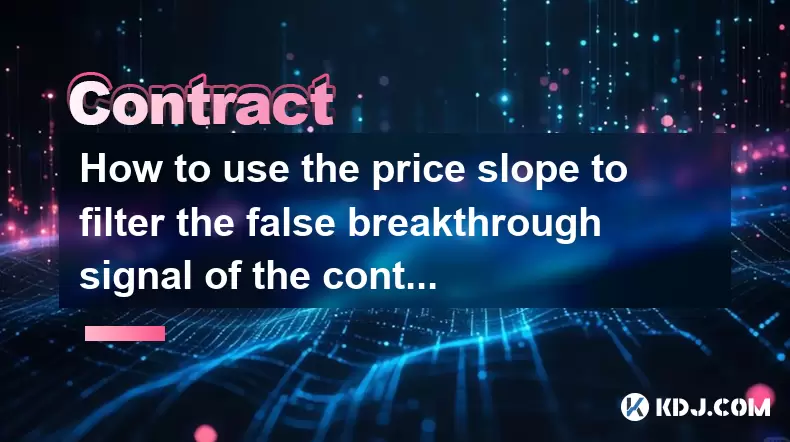
How to use the price slope to filter the false breakthrough signal of the contract?
Jun 20,2025 at 06:56pm
Understanding the Concept of Price Slope in Contract TradingIn contract trading, especially within cryptocurrency derivatives markets, price slope refers to the rate at which the price changes over a specific time period. It helps traders assess the strength and sustainability of a trend. A steep slope may indicate strong momentum, while a shallow slope...
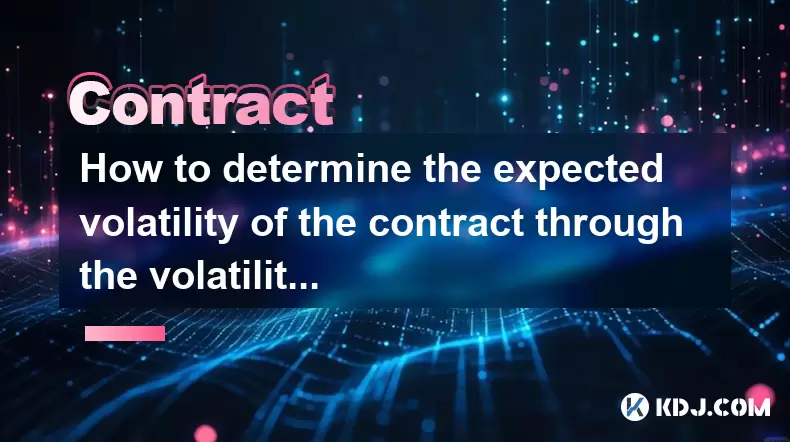
How to determine the expected volatility of the contract through the volatility cone?
Jun 19,2025 at 12:28pm
Understanding the Basics of Volatility in Cryptocurrency ContractsIn the realm of cryptocurrency trading, volatility is a key metric that traders use to assess potential risk and reward. When dealing with futures contracts, understanding how volatile an asset might become over time is crucial for position sizing, risk management, and strategy developmen...
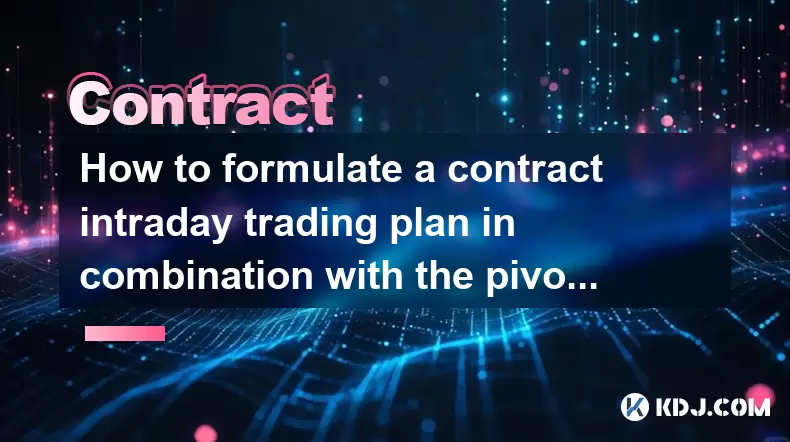
How to formulate a contract intraday trading plan in combination with the pivot point system?
Jun 21,2025 at 03:42pm
Understanding the Basics of Pivot Points in Cryptocurrency TradingPivot points are technical analysis tools used by traders to identify potential support and resistance levels. These levels are calculated using the previous day's high, low, and closing prices. In the context of cryptocurrency trading, where markets operate 24/7, pivot points help trader...
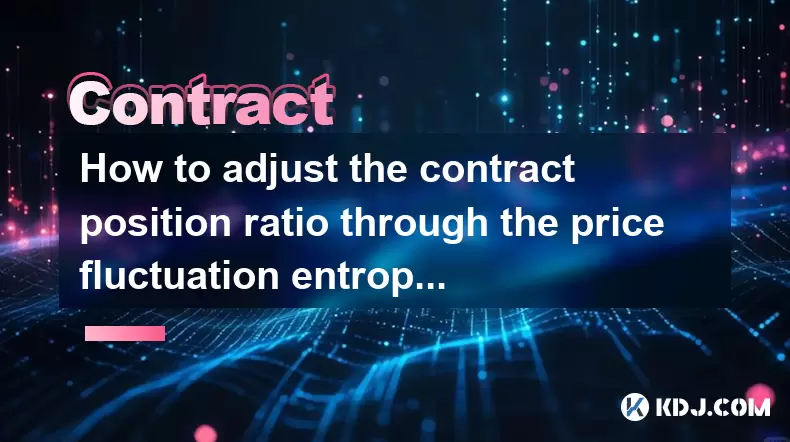
How to adjust the contract position ratio through the price fluctuation entropy?
Jun 22,2025 at 11:42am
Understanding Price Fluctuation Entropy in Cryptocurrency ContractsIn the world of cryptocurrency futures trading, price fluctuation entropy is a relatively new concept used to measure market volatility and uncertainty. It derives from information theory, where entropy refers to the degree of randomness or unpredictability in a system. In crypto contrac...
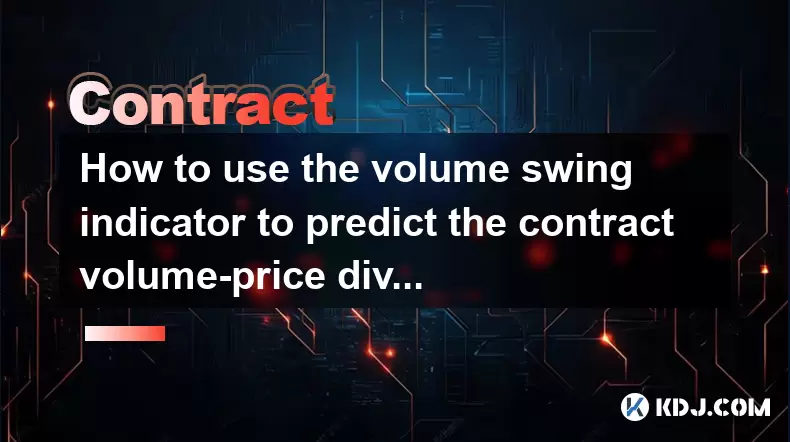
How to use the volume swing indicator to predict the contract volume-price divergence?
Jun 18,2025 at 11:42pm
Understanding the Volume Swing IndicatorThe volume swing indicator is a technical analysis tool used primarily in cryptocurrency trading to evaluate changes in volume over time. Unlike price-based indicators, this metric focuses solely on trading volume, which can provide early signals about potential market reversals or continuations. The key idea behi...
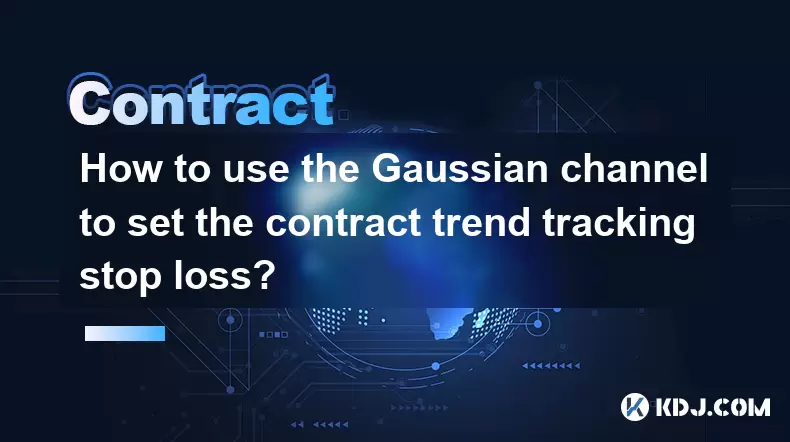
How to use the Gaussian channel to set the contract trend tracking stop loss?
Jun 18,2025 at 09:21pm
Understanding the Gaussian Channel in Cryptocurrency TradingThe Gaussian channel is a technical indicator used primarily in financial markets, including cryptocurrency trading, to identify trends and potential reversal points. It is based on statistical principles derived from the normal distribution, commonly known as the Gaussian distribution or bell ...

How to use the price slope to filter the false breakthrough signal of the contract?
Jun 20,2025 at 06:56pm
Understanding the Concept of Price Slope in Contract TradingIn contract trading, especially within cryptocurrency derivatives markets, price slope refers to the rate at which the price changes over a specific time period. It helps traders assess the strength and sustainability of a trend. A steep slope may indicate strong momentum, while a shallow slope...

How to determine the expected volatility of the contract through the volatility cone?
Jun 19,2025 at 12:28pm
Understanding the Basics of Volatility in Cryptocurrency ContractsIn the realm of cryptocurrency trading, volatility is a key metric that traders use to assess potential risk and reward. When dealing with futures contracts, understanding how volatile an asset might become over time is crucial for position sizing, risk management, and strategy developmen...

How to formulate a contract intraday trading plan in combination with the pivot point system?
Jun 21,2025 at 03:42pm
Understanding the Basics of Pivot Points in Cryptocurrency TradingPivot points are technical analysis tools used by traders to identify potential support and resistance levels. These levels are calculated using the previous day's high, low, and closing prices. In the context of cryptocurrency trading, where markets operate 24/7, pivot points help trader...

How to adjust the contract position ratio through the price fluctuation entropy?
Jun 22,2025 at 11:42am
Understanding Price Fluctuation Entropy in Cryptocurrency ContractsIn the world of cryptocurrency futures trading, price fluctuation entropy is a relatively new concept used to measure market volatility and uncertainty. It derives from information theory, where entropy refers to the degree of randomness or unpredictability in a system. In crypto contrac...

How to use the volume swing indicator to predict the contract volume-price divergence?
Jun 18,2025 at 11:42pm
Understanding the Volume Swing IndicatorThe volume swing indicator is a technical analysis tool used primarily in cryptocurrency trading to evaluate changes in volume over time. Unlike price-based indicators, this metric focuses solely on trading volume, which can provide early signals about potential market reversals or continuations. The key idea behi...

How to use the Gaussian channel to set the contract trend tracking stop loss?
Jun 18,2025 at 09:21pm
Understanding the Gaussian Channel in Cryptocurrency TradingThe Gaussian channel is a technical indicator used primarily in financial markets, including cryptocurrency trading, to identify trends and potential reversal points. It is based on statistical principles derived from the normal distribution, commonly known as the Gaussian distribution or bell ...
See all articles





















